Ethiopia is home to over 80 distinct ethnic groups, each with its own language, rituals, dress, and worldview, making it one of the most culturally diverse countries not only in Africa but globally. Some of these tribes have remained relatively untouched by globalization, preserving ancestral customs that date back thousands of years.
While all of Ethiopia’s ethnic groups contribute to the country’s identity, several stand out for their visual traditions, oral histories, and social structures that are entirely unlike anything else in the modern world.
If you’re looking for the most fascinating tribes of Ethiopia, the Omo Valley region is where you’ll find many of them. Tribes like the Mursi, Hamar, and Karo are known for body painting, lip plates, scarification, and cattle-centered economies. Meanwhile, groups like the Afar and Sidama exhibit striking contrasts in geography, language, and livelihood
1. The Mursi Tribe
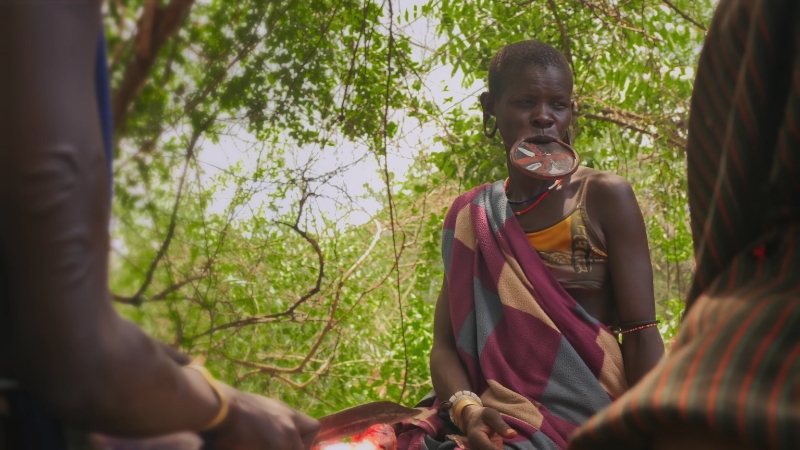
The Mursi people are arguably the most internationally recognized Ethiopian tribe, largely due to the dramatic lip plates worn by women. Located in the lower Omo Valley, the Mursi live in a harsh semi-arid environment and are agro-pastoralists, relying on cattle herding and sorghum cultivation for survival.
One of the Mursi’s defining cultural elements is their female rite of passage, which involves the piercing and gradual stretching of the lower lip, into which a clay plate is inserted. While often misunderstood as mere decoration, these plates signify social maturity, strength, and identity within the tribe.
Mursi men are known for their stick fighting tradition called Donga, a ritualized form of combat that serves both as entertainment and a way to resolve disputes and display masculinity.
Attribute
Description
Region
Lower Omo Valley
Language
Mursi (Surmic language family)
Population
Approx. 10,000–12,000
Known For
Lip plates, body paint, stick fights
Economy
Cattle herding, subsistence farming
The Mursi face growing challenges from encroaching tourism and government land policies, which are affecting their nomadic patterns and cultural preservation.
2. The Hamar Tribe
The Hamar are another well-known tribe of the Omo Valley, recognized for their elaborate hair styling, body adornment, and initiation ceremonies.
Hamar women wear their hair in ochre-coated twists and adorn themselves with beads, cowrie shells, and metal bracelets. Their clothing is made from animal skins, often decorated with beads and colored clay.
The most famous Hamar ritual is the bull-jumping ceremony (Ukuli Bula), which marks a young man’s passage into adulthood. During the ritual, female relatives willingly undergo ritual whipping, bearing scars that symbolize loyalty and strength.
Cultural Highlights
Details
Coming-of-age ritual
Bull jumping
Women’s hairstyles
Ochre and butter-coated braids
Jewelry
Iron bangles, cowrie shells
Housing style
Thatched conical huts
Religion
An animist with ancestral worship
Despite modern pressures, the Hamar have managed to maintain many traditional practices, especially due to their relatively isolated location.
3. The Karo Tribe
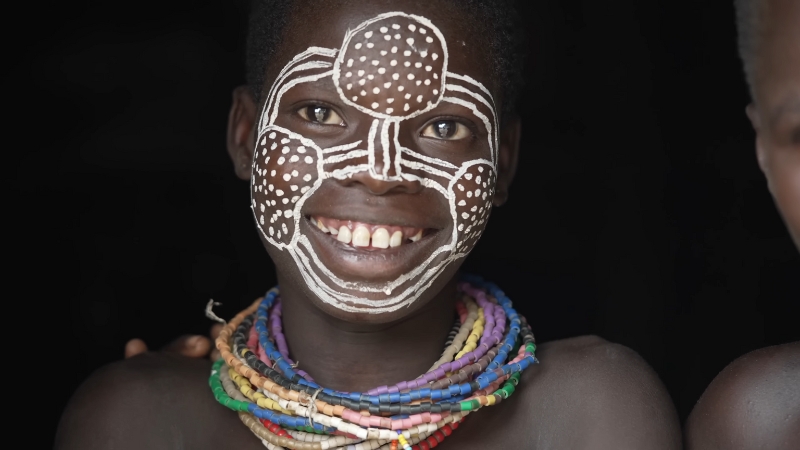
The Karo are among the smallest ethnic groups in Ethiopia, with a population estimated at under 2,000 people, yet they are visually one of the most striking.
Living along the banks of the Omo River, the Karo are masterful body painters, using white chalk, charcoal, ochre, and red clay to decorate their faces and torsos for ceremonies.
Karo men often decorate their faces with geometric patterns, while women use dots and circles. These decorations are not random—they convey social status, group affiliation, and spiritual significance. The Karo also practice ritual scarification, particularly on the torsos of women, which signifies maturity and beauty.
Attribute
Description
Region
Omo River banks
Language
Karo (Omotic)
Population
Under 2,000
Distinctive Features
Body painting, scarification
Religion
Animism and ancestor reverence
Despite their small numbers, the Karo are a vital part of Ethiopia’s living cultural museum. However, they are increasingly vulnerable to climate change and government resettlement programs.
4. The Afar Tribe
View this post on Instagram
In stark contrast to the riverine tribes of the Omo, the Afar people live in one of the harshest environments on earth: the Danakil Depression, which is also one of the hottest and lowest places on the planet.
The Afar are nomadic pastoralists and have long been known as fierce warriors and resilient desert dwellers.
Afar men traditionally carry curved daggers and jile (Afari swords), while women wear colorful cotton dresses and cover their heads with scarves. Their social structure is clan-based, and Islam is the dominant religion. Livelihood is centered around camel herding, salt mining, and small-scale agriculture near riverbeds.
Attribute
Details
Region
Danakil Depression, northeast Ethiopia
Language
Afar (Cushitic)
Religion
Predominantly Muslim
Economy
Camel herding, salt trade
Notable Feature
The harshest inhabited region globally
The Afar are known for their independence and resistance to outside control, historically clashing with Ethiopian and colonial powers. Their cultural endurance in such a hostile landscape is a testament to their adaptability and tenacity.
5. The Surma (Suri) Tribe
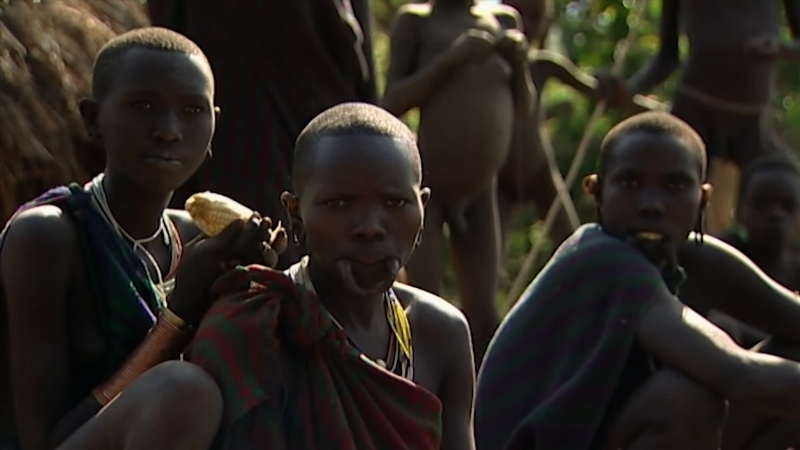
Often grouped with the Mursi due to similar customs, the Surma (also called Suri) inhabit the remote southwest region of Ethiopia near the Sudanese border. Like the Mursi, Surma women also wear large lip plates and practice body painting and scarification.
They are agro-pastoralists, relying heavily on cattle as currency, status symbols, and dowry exchange.
One of the most dramatic Surma traditions is the stick fighting ceremony (Saginé), which serves both as a sport and a test of manhood. Combatants compete publicly, often in front of the entire village, and injuries are common.
Cultural Trait
Details
Region
Southwestern Ethiopia
Population
Approx. 7,500
Language
Suri (Surmic language family)
Economy
Cattle, sorghum, corn
Unique Features
Lip plates, body paint, stick fights
Like other Omo Valley tribes, the Surma are facing threats from land development and external political pressures that could erode their cultural practices in the coming decades.
6. The Sidama People
@visitethiopiatoursThe Sidama people attended in the Ireechaa festival♬ original sound – visitethiopiatours
Unlike the pastoralist and semi-nomadic groups in the south, the Sidama are a highland people known for their intensive agriculture, structured economy, and coffee production.
Located in the Southern Nations, Nationalities, and Peoples’ Region (SNNPR), Sidama is one of Ethiopia’s most populous ethnic groups, with over 4 million people.
Sidama households are structured around clans, and land inheritance plays a vital role in wealth and status. Their primary crop is enset (false banana), which is used to make a starchy staple called kocho. The Sidama also cultivate maize, barley, and coffee—some of the highest-quality beans in Ethiopia come from this region.
Attribute
Details
Region
Southern Ethiopia
Language
Sidama (Cushitic)
Population
4+ million
Main Crops
Enset, maize, coffee
Cultural Features
Clan systems, music, and festivals
While more integrated into modern Ethiopia than Omo Valley tribes, the Sidama people maintain a strong sense of cultural identity through language, dress, and traditional governance systems known as Luwaa.
7. The Bodi Tribe
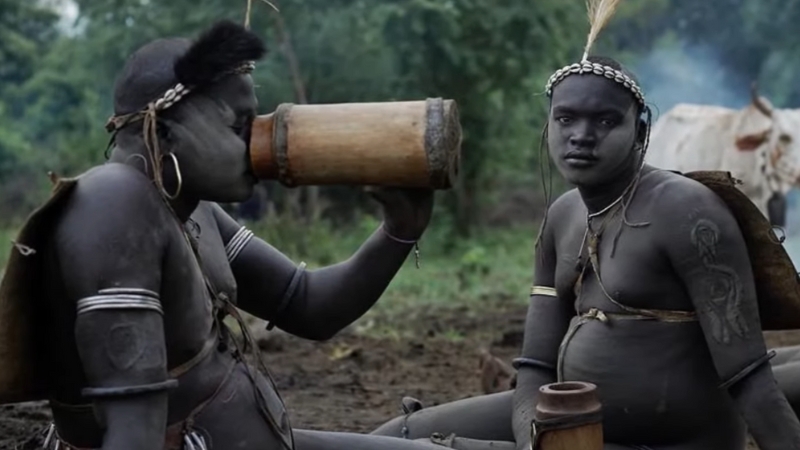
The Bodi, neighbors to the Mursi in the Omo Valley, are semi-nomadic cattle herders known for one of the most unique and extreme rituals of physical transformation in East Africa.
Each year, during the Ka’el fattening ceremony, young Bodi men compete to become the “fat man of the year” by drinking a mixture of blood and milk to gain massive weight over six months. The winner becomes a village hero and symbol of prosperity for that season.
Bodi culture is centered around cattle, not just as economic assets, but also as part of their spiritual and social identity. Men name their cattle, compose songs about them, and engage in daily rituals that include applying ash and cow dung to their skin for both spiritual protection and insect repellent.
Attribute
Details
Region
Omo Valley
Language
Me’en (Surmic)
Economy
Cattle herding, limited cultivation
Unique Tradition
Fattening ritual with blood/milk diet
Population Estimate
Around 10,000
The Bodi are facing increasing threats due to agricultural development and resettlement plans that interfere with their grazing patterns and ceremonial calendar.
8. The Dassanech Tribe
The Dassanech, also known as the Dassanach or Daasanach, are a pastoralist and agro-pastoralist ethnic group located in the Lower Omo Valley in Ethiopia. They inhabit areas along the Omo River and the northern shores of Lake Turkana in both Ethiopia and Kenya. The Dassanech…
— African Hub (@AfricanHub_) January 30, 2024
The Dassanech (or Daasanach) tribe lives near the delta of the Omo River, close to the Kenyan border and Lake Turkana. Once pastoralists, they were forced to transition to agro-fishing and crop growing due to cattle disease and land loss.
The tribe has since adapted impressively, maintaining cultural depth while shifting its economic base.
Dassanech women are famous for their recycled fashion, crafting elaborate headgear and jewelry out of bottle caps, aluminum, and other discarded items. This has become a symbol of both resilience and artistic identity.
Culturally, the Dassanech organize their community around age sets and initiation rituals. Circumcision, scarification, and storytelling are key parts of spiritual and social identity.
Attribute
Details
Region
Omo Delta / Lake Turkana
Language
Cushitic (Dassanech)
Economy
Fishing, flood farming, and small livestock
Cultural Note
Age-set system and recycled material jewelry
Population Estimate
Around 50,000
Despite outside influence, the Dassanech maintain multi-generational oral history traditions and local governance systems that remain active today.
9. The Wolayta People
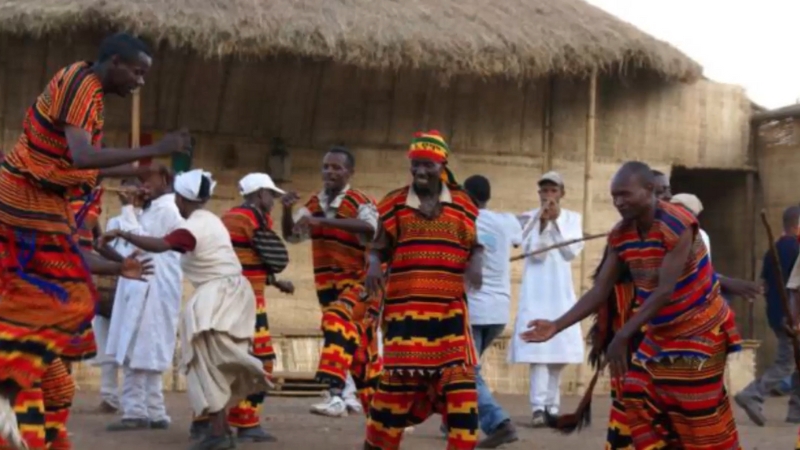
The Wolayta are one of Ethiopia’s largest ethnic groups, located in the fertile highlands of the south. Unlike the semi-nomadic tribes of the Omo, the Wolayta have a settled agrarian culture.
They are known for their intensive farming techniques, vibrant markets, and rich cultural traditions, including music and dance.
A major contribution of the Wolayta is their influence on modern Ethiopian pop culture—their unique rhythms and instruments have influenced national music. The traditional dance, often performed in circular patterns with shoulder-driven movement, is instantly recognizable across the country.
Attribute
Details
Region
Wolayta Zone (SNNPR)
Language
Wolaytta (Omotic)
Economy
Agriculture (enset, maize, cattle)
Cultural Features
Music, dance, and clan systems
Population Estimate
Over 2 million
While modernized in many ways, the Wolayta retain deep clan-based governance systems, and their language remains widely spoken and formally taught.
10. The Bench People
View this post on Instagram
The Bench people inhabit the lush, forested highlands of southwest Ethiopia. Lesser-known internationally, they are a richly traditional society with a strong connection to the land, practicing terraced farming, beekeeping, and coffee cultivation.
The Bench is known for its ritual dances, ceremonial headgear, and community-based dispute resolution methods.
Their unique social structure includes the “kawo” system, a kingship-like model that still holds cultural authority in certain areas, despite integration into the modern state. Traditional religion is still practiced alongside Christianity, with sacred groves, animal sacrifice, and rainmaking rituals playing a central role in local life.
Attribute
Details
Region
Bench Sheko Zone (SNNPR)
Language
Bench (Northern Omotic)
Economy
Coffee farming, honey production, and maize
Distinctive Traits
Kawo leadership, ceremonial dance
Population Estimate
Approx. 300,000
Bench culture showcases how traditional ecological knowledge and community resilience thrive even amid modernization and political change.
Conclusion
From the lip-plated Mursi of the Omo Valley to the salt-trading Afar of the Danakil, Ethiopia’s tribes are more than cultural curiosities—they are testaments to human adaptation, creativity, and social complexity.
These communities offer a rich, multi-layered view of Africa that goes beyond headlines and history books. Each group faces modern pressures—climate change, tourism, and political centralization—but they continue to preserve centuries-old customs through rituals, agriculture, and kinship systems.
If you want to understand Ethiopia, you must understand its tribes. They are the living fabric of the nation’s history and future. Knowing them isn’t just about observing—it’s about recognizing the importance of cultural preservation in a rapidly changing world.
